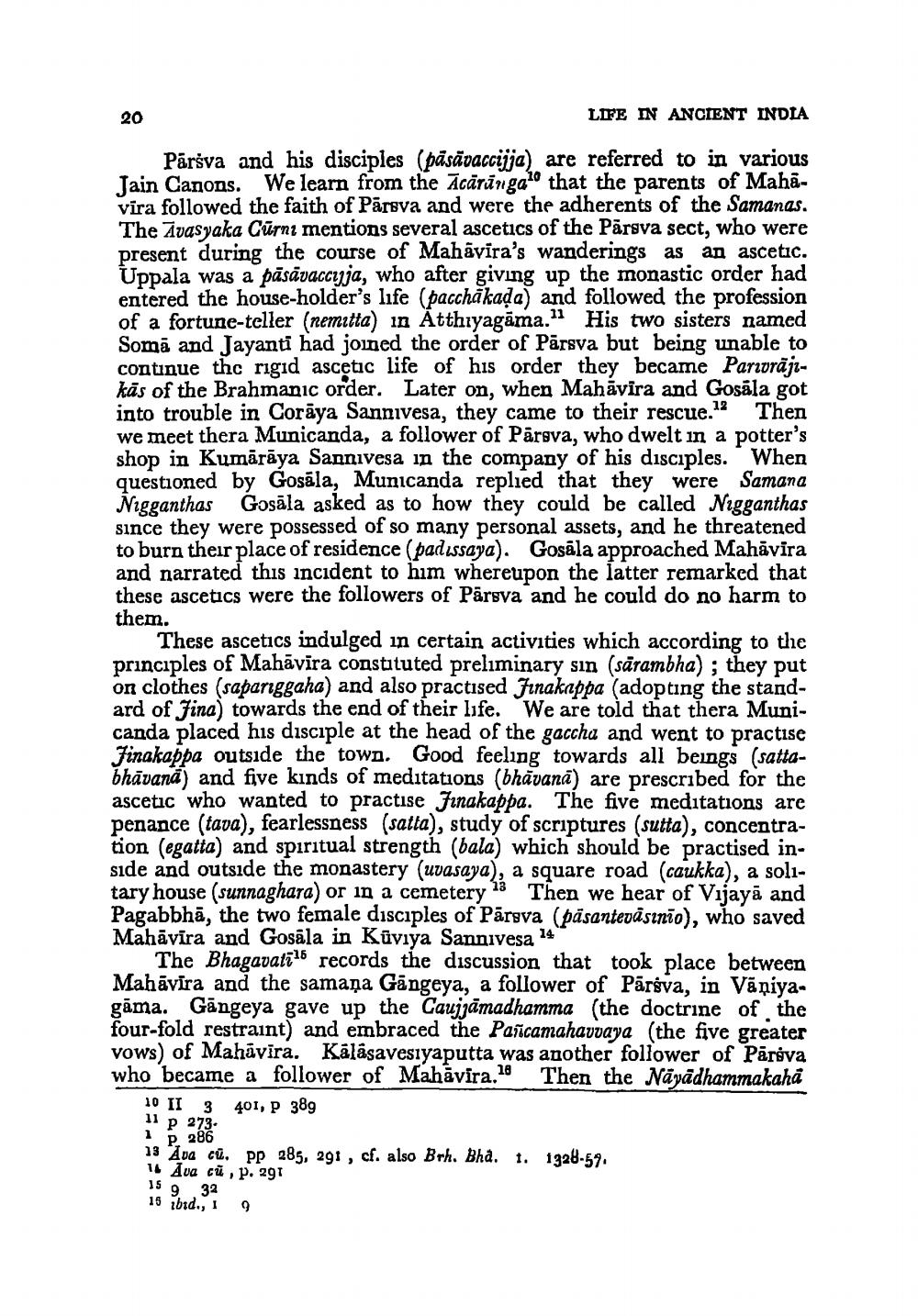________________
20
LIFE IN ANCIENT INDIA
of a fortune-teller holder's life (pacchakatning up the monastic
Pāršva and his disciples (pasādaccijja) are referred to in various Tain Canons. We learn from the Ācārūngazo that the parents of Mahavira followed the faith of Pārsva and were the adherents of the Samanas. The Āvasyaka Cūrni mentions several ascetics of the Pārsva sect, who were present during the course of Mahāvira's wanderings as an ascetic. Uppala was a pāsāvaccuja, who after giving up the monastic order had entered the house-holder's life (pacchākada and followed the profession of a fortune-teller (nemitta) in Atthiyagāma.11 His two sisters named Somā and Jayanti had joined the order of Pārsva but being unable to continue thc rigid ascetic life of his order they became Paridrājikās of the Brahmanic order. Later on, when Mahāvira and Gosala got into trouble in Corāya Sannivesa, they came to their rescue." Then we meet thera Municanda, a follower of Pārsva, who dwelt in a potter's shop in Kumārāya Sannivesa in the company of his disciples. When questioned by Gosāla, Municanda replied that they were Samana Nigganthas Gosāla asked as to how they could be called Nigganthas since they were possessed of so many personal assets, and he threatened to burn their place of residence (padissaya). Gosāla approached Mahāvira and narrated this incident to him whereupon the latter remarked that these ascetics were the followers of Pārsya and he could do no harm to them.
These ascetics indulged in certain activities which according to the principles of Mahāvīra constituted preliminary sin (särambha) ; they put on clothes (sapanggaha) and also practised Jinakappa (adopting the standard of Jina) towards the end of their life. We are told that thera Municanda placed his disciple at the head of the gaccha and went to practise Finakappa outside the town. Good feeling towards all beings (sattabhāvanā) and five kinds of meditations (bhāvanā) are prescribed for the ascetic who wanted to practise Jinakappa. The five meditations are penance (tava), fearlessness (satta), study of scriptures (sutta), concentration (egatta) and spiritual strength (bala) which should be practised inside and outside the monastery (uvasaya), a square road (caukka), a solitary house (sunnaghara) or in a cemetery 13 Then we hear of Vijayā and Pagabbhā, the two female disciples of Pārsva påsantevāsinio), who saved Mahāvira and Gosāla in Küviya Sannivesa. 14
The Bhagavatī16 records the discussion that took place between Mahāvīra and the samaņa Gāngeya, a follower of Pārsva, in Vāņiyagāma. Gāngeya gave up the Caujjāmadhamma (the doctrine of the four-fold restraint) and embraced the Pascanahavvaya (the five greater vows) of Mahāvīra. Kálásavesiyaputta was another follower of Pārsva who became a follower of Mahāvira.10 Then the Nāyādhammakaha
10 II3 401, P 389 11 p 273 13 Ava cu PP 285, 291 , cf. also Brh. Bha. 1. 1928-57. I Ăua cũ TP. 29 15 9 32 15 ibid., 1 9
P 286




